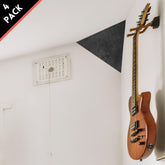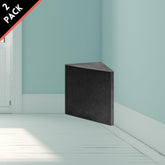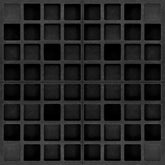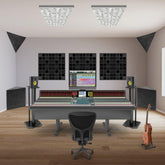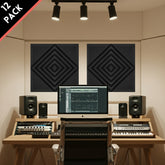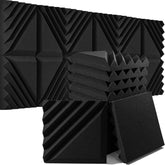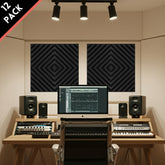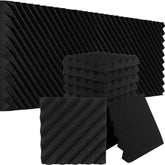Sound Engineering Guide: Why Room Acoustics Matter More Than Gear
The Silent Partner: Why Your Room is the Most Important Member of Your Band
There is a specific, heartbreaking moment in every musician's journey. You have spent months saving up money. You have scoured every forum, watched every YouTube review, and finally purchased the industry-standard microphone and the high-fidelity interface that your favorite Grammy-winning producer uses. You unbox the gear, plug everything in with trembling hands, hit record, and wait for the magic. But when you listen back, the magic isn't there. The vocals sound distant, hollow, and amateurish. The acoustic guitar sounds boomy and undefined. The mix that sounded massive in your headphones completely falls apart when you play it in your car. It is disheartening, and the immediate instinct is to blame the gear—or worse, your own talent.
But as a veteran who has walked this path and guided countless others through it, I can tell you with absolute certainty: the problem is rarely your gear, and it is rarely your skills. The problem is the invisible third party in your session—your room. Sound engineering is not merely the act of capturing a source; it is the physics of capturing a source within an environment. In the uncontrolled chaos of a square bedroom, a basement with concrete walls, or a loft with high ceilings, the laws of physics are actively working against you. This guide is not just another glossary of terms; it is a comprehensive, deep dive into the acoustic reality of recording, designed to help you stop fighting your room and start making professional records.

The Physics of Disappointment: Understanding Room Modes
To understand why your recordings don't sound like the pros, we have to look at what happens the moment sound leaves a speaker or an instrument. Sound travels at approximately 1,130 feet per second. In a typical home studio, that sound wave hits a boundary—a wall, ceiling, or floor—within milliseconds. These are called "early reflections." When these reflected waves bounce back and mix with the direct sound from your speakers, they create a phenomenon called "comb filtering." This creates jagged peaks and dips in the frequency response, causing your brain to hear a smeared, unfocused stereo image. Instruments become hard to pinpoint, and the "phantom center" (where the vocal should sit) feels wide and vague.
However, the true villain in small rooms is low-frequency energy. Bass waves are massive physical structures. A 50Hz sound wave is over 22 feet long. When you try to fit a 22-foot wave into a 12-foot room, the wave physically cannot develop fully. It folds back on itself, creating "standing waves" or "room modes." This results in spots in your room where the bass is artificially amplified (peaks) and other spots where it completely vanishes (nulls). If your mixing chair is sitting in a null, you will instinctively boost the bass in your mix. When you take that mix to a club or a car, the bass will be overwhelming. You were EQing the room, not the music.
The only scientifically valid way to manage this massive energy is through broadband absorption. This is where proper bass traps come into play. Unlike thin foam which only affects high frequencies, bass traps are designed with high-density materials and sufficient depth to absorb the heavy energy accumulating in the corners. By trapping this bass, you prevent it from reflecting back into the room, which ironically results in more bass being heard at the listening position because the cancellation caused by the reflections is removed.
The Missing Link: Absorption vs. Diffusion
While absorbing unwanted noise is critical, there is a danger in over-absorbing. If you cover every inch of your walls with absorption panels, you risk creating a "dead" room that sounds unnatural and suffocating. This is where the concept of Diffusion becomes vital. In world-class studios, you don't just see soft fabric walls; you see complex, geometric wooden structures. These are diffusers.
Diffusion does not absorb sound; it scatters it. When a sound wave hits a diffuser, it is broken up into smaller reflections that are sent in many different directions. This retains the "energy" and "life" of the room without the harsh, direct echoes that cause problems. A combination of acoustic panels for absorption and strategic diffusion allows you to create a room that sounds "neutral" yet "musical." This balance is the secret signature of a professional tracking space.
The Hidden Phenomenon: SBIR (Speaker Boundary Interference Response)
Let's go deeper into a technical concept that separates the amateurs from the pros: SBIR. This stands for Speaker Boundary Interference Response. It occurs when the omnidirectional low frequencies radiating from the back of your studio monitor bounce off the front wall (the wall you are facing) and recombine with the sound coming from the front of the speaker. Because of the slight time delay, specific low-mid frequencies (often around 100Hz to 200Hz) are cancelled out perfectly due to phase cancellation.
This creates a "suck-out" or a deep hole in your audio spectrum that no amount of EQ can fix. In fact, boosting that frequency with an EQ just drives the speaker harder, increasing the reflection and making the cancellation even stronger. If your kick drums lack punch or your guitars feel thin, SBIR is likely the culprit. The solution is physical: moving your speakers or placing thick absorption panels directly behind the speakers to catch that rear-firing energy before it bounces.
The Signal Chain: Preserving Integrity from Source to Storage
With the acoustic foundation laid, we can look at the electronics with a clearer perspective. The "Signal Chain" is the holy grail of engineering—the path your audio takes from the air to the hard drive. It is helpful to visualize this as water flowing through a series of pipes; any leak or blockage affects the final quality at the tap.
It starts with the microphone (the transducer), travels to the preamp (amplification), goes through the converters (digitization), and finally lands in the DAW (storage). A common mistake beginners make is focusing on the "resolution" of the converters (like 192kHz sample rates) while ignoring the basics of Gain Staging. Gain staging is the discipline of keeping your signal level in the "sweet spot"—loud enough to be well above the electronic hiss (noise floor) but quiet enough to avoid digital clipping. In the modern 24-bit digital recording world, the old habit of recording as "hot" as possible is obsolete. Prudent engineers leave ample "headroom"—space between the peak of the signal and the digital ceiling (0dBFS). This ensures that "transients"—the initial, punchy burst of sound at the start of a drum hit or guitar strum—are captured cleanly without distortion.
Microphone Technique: The First EQ
Before you ever reach for a plugin, you should be EQing with your microphone placement. Moving a microphone just two inches can change the sound more drastically than any expensive analog equalizer. This is primarily due to the "Proximity Effect." Directional microphones (Cardioid pattern) naturally boost bass frequencies as they get closer to the source. This can be used creatively to make a thin vocalist sound like a radio DJ, but it can also ruin a recording by making an acoustic guitar sound muddy and booming.
Furthermore, the distance of the mic controls the ratio of direct sound to reflected sound. In a well-treated room equipped with a studio acoustic bundle, you have the artistic freedom to back the microphone away. This captures the instrument's natural "bloom" and its interaction with the air, resulting in a realistic, three-dimensional sound. In an untreated room, you are forced into "close-miking" everything to avoid the ugly room flutter. This leads to an unnatural, claustrophobic sound that makes the listener feel like they have their ear pressed against the instrument. Treatment buys you the luxury of distance.

Mixing: The Art of Balance and Illusion
Mixing is where science meets emotion. It is the process of taking individual tracks and weaving them into a cohesive sonic tapestry. While tools like Saturation, Multiband Compression, and Exciter plugins are exciting, the two most powerful tools in a mix engineer's arsenal are Balance (Volume) and EQ.
Balance establishes the hierarchy of the song. Who is the lead actor? Who is supporting? EQ helps these actors stay in their lanes without bumping into each other. A dense mix is like a jigsaw puzzle; for the vocal to shine, the piano might need to have some midrange cut out. For the kick drum to punch, the bass guitar might need to make space in the sub-frequencies. But here is the catch: you cannot make these critical decisions if your monitoring environment is lying to you. If your room has a 12dB resonance at 120Hz, you will unknowingly cut that frequency in the mix to compensate. When you play that track on a calibrated system, it will sound thin and lifeless. An accurate room allows you to make bold moves with confidence, knowing that what you hear is the truth.
Depth and Dimension: Psychoacoustics
Finally, we touch on the "holy grail" of mixing: Depth. How do you make a speaker, which is a flat 2D surface, project a 3D image? We do this by manipulating the brain's psychoacoustic cues. In the real world, sounds that are far away are quieter, have less high-frequency content (as air absorbs high frequencies over distance), and are more "washed out" by the environment's reverb.
By artificially replicating these cues using reverb and delay plugins, we can place instruments front-to-back in the soundstage. But this illusion is incredibly fragile. If your tracking room adds its own short, metallic "flutter echo" to the recording, the brain immediately recognizes it as "small room sound." It breaks the illusion of the vast hall or cavern you are trying to create in the mix. This is why professional studios sound "neutral." They provide a blank canvas. By removing the sonic signature of your small room with proper acoustic treatment, you unlock the ability to transport the listener to any space you can imagine.
Conclusion: The Return on Investment
In the world of audio production, we often talk about ROI (Return on Investment). A new synthesizer might inspire a few songs. A new preamp might add 5% more clarity to your vocal chain. But treating your room changes everything. It improves how you record, how you mix, how you master, and most importantly, how you enjoy music. It eliminates the guesswork and the fatigue of trying to mentally compensate for a flawed environment.
Sound engineering is a lifelong pursuit of excellence. It requires patience, critical listening, and a healthy respect for the laws of physics. By prioritizing your acoustic environment, you are building a foundation that will support every other piece of gear you ever buy. The gear is just the vehicle; your ears and your room are the road. Make sure the road is smooth so you can enjoy the drive.
Frequently Asked Questions (FAQ)
I have egg cartons and foam mattresses. Can I use them for acoustic treatment?
This is the most persistent myth in audio history. Scientifically speaking, egg cartons and mattresses are not dense enough to absorb sound effectively. They might slightly scatter some very high frequencies, but they are completely transparent to mid and low frequencies, which are the real problems in small rooms. Worse, they present a serious fire hazard. Acoustic treatment relies on the principle of converting sound energy into heat via friction within a high-density porous material (like mineral wool). FOROOMACO panels are engineered with specific densities to target the problematic frequencies that actually ruin recordings.
What is the difference between a "Bass Trap" and a regular panel?
It comes down to thickness, density, and placement. Standard acoustic panels are typically thinner and are designed to control mid-to-high frequency reflections (vocals, guitars, cymbals). Bass traps are significantly thicker and denser. They are designed to slow down and absorb high-energy low-frequency waves. Because bass energy naturally accumulates in corners due to physics, bass traps are almost always placed in the corners of the room to be most effective.
How do I know where to place the panels? (The Mirror Trick)
You don't need a degree in physics to find the starting points. Sit in your mixing chair and have a friend slide a mirror along the side wall at ear height. The moment you see the speaker reflection in the mirror, mark that spot with tape. That is a "First Reflection Point." Sound hits that spot and bounces directly into your ear, confusing the stereo image. Placing panels at these mirror points on the left, right, and ceiling (cloud) will yield the most dramatic improvement in clarity.
My room is very small. Will acoustic panels make it sound "dead"?
A common fear is that treatment will suck the life out of a room. In reality, small untreated rooms don't sound "alive"; they sound "noisy" and "confused" due to flutter echo and comb filtering. Treating a small room removes this chaotic noise, making the room sound tighter, clearer, and surprisingly, often "larger" because the oppressive boominess is gone. The goal isn't an anechoic chamber (completely dead), but a "controlled" environment where you hear the speakers, not the walls.
Does acoustic treatment help with soundproofing so my neighbors don't hear me?
We must be transparent here: No. Acoustic treatment (panels/traps) is for internal sound quality—making your recordings sound better inside the room. Soundproofing is for isolation—stopping sound from leaving the room. Soundproofing requires heavy construction (mass-loaded vinyl, double drywall, air gaps, decoupling). However, treating your room can indirectly help your neighbors because you won't need to turn your speakers up as loud to hear the details. A clearer room allows for monitoring at lower, safer volumes.
ABOUT AUTHOR
House Live Engineer of Free Bird, a live house with the history of South Korea's indie music scene.
Single album/Regular album/Live recording, Mixing and Mastering experience of various rock and jazz musicians



